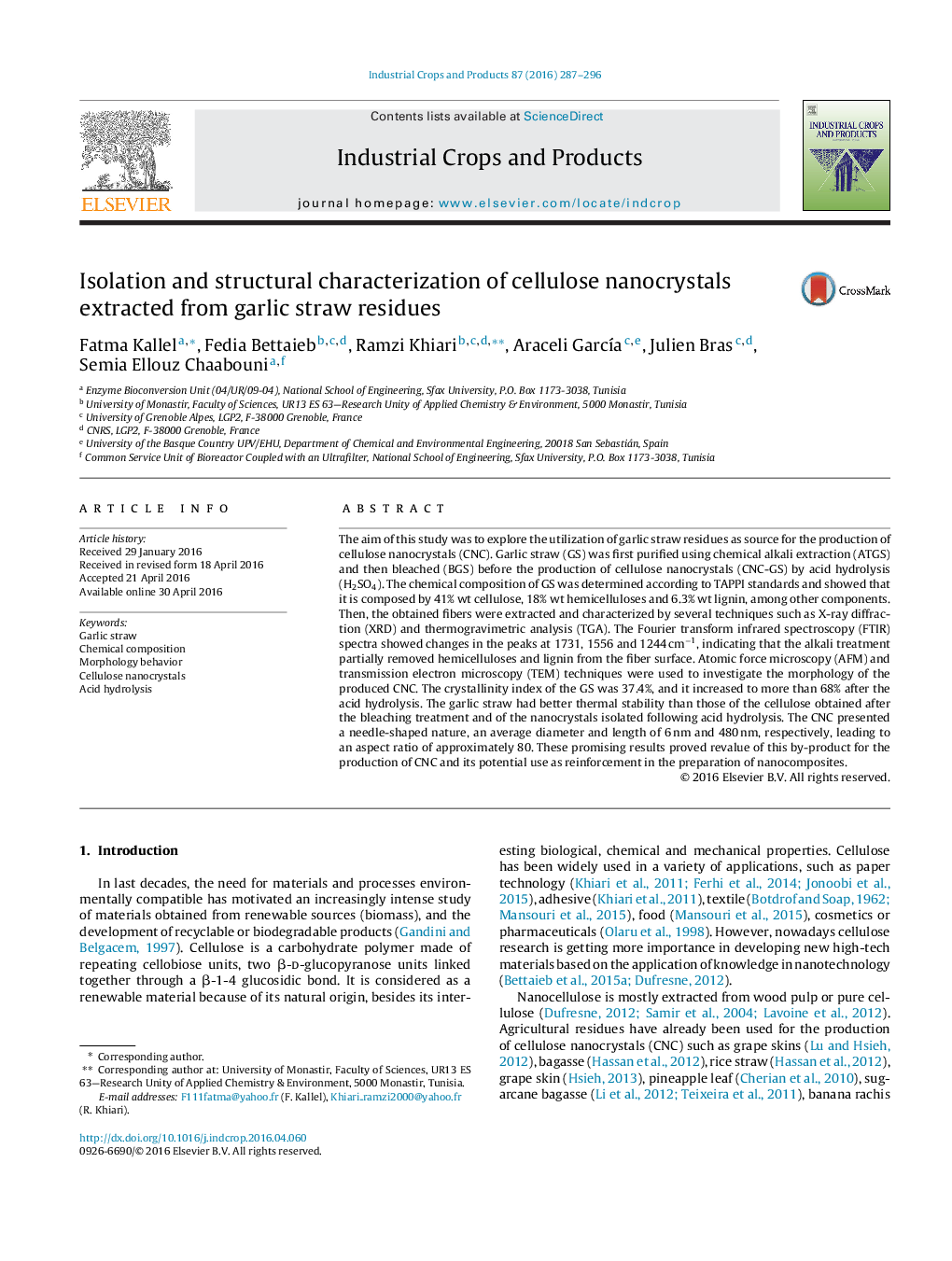| کد مقاله | کد نشریه | سال انتشار | مقاله انگلیسی | نسخه تمام متن |
|---|---|---|---|---|
| 4512271 | 1624823 | 2016 | 10 صفحه PDF | دانلود رایگان |
• High aspect ratio cellulose nanocrystals were extracted from garlic straw residues.
• The crystallinity index of the extracted CNCs is found to be 68%.
• Rod-like CNCs have diameters of 6 nm and length 480 nm as revealed by TEM and AFM.
The aim of this study was to explore the utilization of garlic straw residues as source for the production of cellulose nanocrystals (CNC). Garlic straw (GS) was first purified using chemical alkali extraction (ATGS) and then bleached (BGS) before the production of cellulose nanocrystals (CNC-GS) by acid hydrolysis (H2SO4). The chemical composition of GS was determined according to TAPPI standards and showed that it is composed by 41% wt cellulose, 18% wt hemicelluloses and 6.3% wt lignin, among other components. Then, the obtained fibers were extracted and characterized by several techniques such as X-ray diffraction (XRD) and thermogravimetric analysis (TGA). The Fourier transform infrared spectroscopy (FTIR) spectra showed changes in the peaks at 1731, 1556 and 1244 cm−1, indicating that the alkali treatment partially removed hemicelluloses and lignin from the fiber surface. Atomic force microscopy (AFM) and transmission electron microscopy (TEM) techniques were used to investigate the morphology of the produced CNC. The crystallinity index of the GS was 37.4%, and it increased to more than 68% after the acid hydrolysis. The garlic straw had better thermal stability than those of the cellulose obtained after the bleaching treatment and of the nanocrystals isolated following acid hydrolysis. The CNC presented a needle-shaped nature, an average diameter and length of 6 nm and 480 nm, respectively, leading to an aspect ratio of approximately 80. These promising results proved revalue of this by-product for the production of CNC and its potential use as reinforcement in the preparation of nanocomposites.
Figure optionsDownload as PowerPoint slide
Journal: Industrial Crops and Products - Volume 87, September 2016, Pages 287–296
